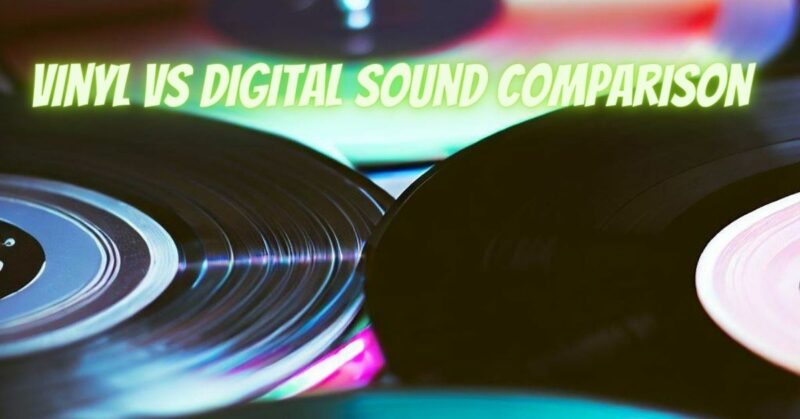The age-old debate between vinyl and digital audio formats has captivated audiophiles and music enthusiasts for decades. Both formats offer unique listening experiences, each with its own set of merits and characteristics. In this article, we’ll delve into the realm of audio quality, exploring the intricacies of vinyl and digital formats, and providing insights into their distinctive sonic landscapes.
Vinyl Format:
Sound Character: Vinyl records are known for their warm, analog sound character. The inherent imperfections in vinyl playback, such as surface noise and gentle pops, contribute to a vintage charm that some listeners find captivating.
Dynamic Range: Vinyl records can offer an impressive dynamic range, especially when mastered and pressed with care. The analog nature of vinyl allows for smooth transitions between different audio levels, contributing to a sense of musical realism.
Frequency Response: Vinyl records have a limited frequency response compared to digital formats. The upper frequency limit can be affected by the physical limitations of the groove size and stylus tracking capabilities.
Digital Format:
Sound Character: Digital audio formats, when well-encoded, are often characterized by their clarity and precision. The absence of surface noise and pops provides a clean canvas for the music.
Dynamic Range: Digital formats can provide an extended dynamic range, capturing both the quietest whispers and the loudest crescendos with accuracy. High-quality digital recordings offer detailed nuances in the music.
Frequency Response: Digital formats have a wider and more consistent frequency response compared to vinyl records. This allows for accurate reproduction of both high and low frequencies.
Factors Influencing Audio Quality:
1. Source Material:
- The quality of the original recording plays a pivotal role in determining the final audio quality, regardless of the format. A well-recorded track will sound excellent whether on vinyl or digital.
2. Mastering and Pressing:
- The quality of mastering and vinyl pressing affects the audio quality of vinyl records. Well-mastered and pressed vinyl records can showcase the unique warmth associated with the format.
3. Analog vs. Digital Conversion:
- The process of converting analog sound to digital (and vice versa) can influence the audio quality. High-quality analog-to-digital and digital-to-analog converters are essential for maintaining fidelity.
4. Playback Equipment:
- The quality of your playback equipment, including turntables, cartridges, amplifiers, and speakers, significantly impacts how both vinyl and digital formats sound.
5. Listener Preferences:
- Personal preferences play a substantial role in how listeners perceive audio quality. Some individuals are drawn to the warmth of vinyl, while others appreciate the clinical precision of digital audio.
Evaluating audio quality between vinyl and digital formats involves exploring their distinctive characteristics, recognizing the factors that influence sound, and understanding individual preferences. Vinyl records offer a vintage charm with their warm sound and analog imperfections, while digital formats provide clarity and precision. Ultimately, the choice between the two formats is a matter of personal taste and the equipment used for playback. Both formats have their merits, and the key is to immerse yourself in the musical experience that resonates with you the most. Whether you’re drawn to the nostalgia of vinyl or the fidelity of digital, the beauty of music lies in the diverse ways it can be enjoyed and appreciated.

